Chinese Glass @ Bonhams, Hong Kong
Lot 234. A rare red glass bottle vase, Yongzheng four-character wheel-cut mark and of the period; 23cm high. Sold for HK$1,560,000 (€ 178,067). photo Bonhams.
Of sumptuous globular form, skilfully moulded with a raised ridge at the shoulder and surmounted by a tall tapering neck, the glass of a rich mottled red colour suffused with bubbles and inclusions.
Provenance: Ashkenazie & Co., San Francisco, 12 May 1988.
Illustrated 出版: A Chorus of Colors, Asian Art Museum of San Francisco, 1995, pp.50-51, no.24
R.Kleiner, Chinese Snuff Bottles in the Collection of Mary & George Bloch, British Museum Press, London, 1995, p.xxi, fig.2
清雍正 透明紅玻璃賞瓶 「雍正年製」楷款
來源:1988年5月12日購自三藩市Ashkenazie & Co.
Lot 208. An extremely rare ruby-red and white overlay glass 'ruyi' jar, Qianlong four-character wheel-cut mark and of the period; ; 8.3cm diam. Estimate: HK$200,000 - 400,000, USD 26,000 - 52,000. Sold for HK$1,320,000 (€ 150,672). photo Bonhams
Of elegant rounded form, springing from an accentuated foot, and tapering to the mouth, the lower overlay of a rich ruby-red colour, finely carved as a stylised peony flower with eight interlocking petals with deftly incised veining, the central body an opaque white colour, the upper overlay carved with ruyi motifs, the lipped rim intricately incised with a four character kaishu mark, original carved wood stand.
Provenance: Ashkenazie & Co., San Francisco, 4 November 1986.
Illustrated 出版: A Chorus of Colors, Asian Art Museum of San Francisco, 1995, p.99, cat. no.73
R.Kleiner, Chinese Snuff Bottles in the Collection of Mary & George Bloch, British Museum Press, London, 1995, p.xxiii, fig.5
Catalogue of the International Art Fair, New York, March 1997, p.15, cat. no.17
清乾隆 白套紅玻璃蓮瓣紋缽「乾隆年製」楷款
來源: 於1986年11月4日購自三藩市Ashkenazie & Co.
Qianlong-reign marked jars of this type are extremely rare, representing the pinnacles of achievement of the Beijing Palace glass workshops. The precise form, quality of the ruyi-design carving, and powerful contrasting colours mark this select group out amongst other Imperial Qing dynasty glass wares. A closely related jar from the Qing court collection, preserved in the Palace Museum, Beijing, with additional bands in sapphire-blue around the neck and foot, is illustrated in Luster of Autumn Water: Glass of the Qing Imperial Workshop, Beijing, 2005, p. 208, pl. 59
Only one other jar of this type appears to have been offered at auction, a slightly larger (12.5cm diameter) example, sold at Sotheby's Hong Kong, The Collection of a Parisian Connoisseur, 8 April 2007, lot 519, differing from the current jar in that the four-character mark is inscribed around the base. Another red-overlay jar, formerly in the Robert Clague Collection, and now in the Hong Kong Museum of Art, is illustrated in The Robert H. Clague Collection. Chinese Glass of the Qing Dynasty, Phoenix Art Museum, Phoenix, 1987, cat. no 18. Another unpublished example is in the collection of the Bristol City Museum and Art Gallery, England
Lot 232. A rare 'amethyst' glass bottle vase, Yongzheng four-character wheel-cut mark and of the period; 13.9cm high. Sold for HK$660,000 (€ 75,336). photo Bonhams
Of elegant 'S'-shaped section, supported on a short straight foot, gently undulating inwards and sloping at the shoulders, surmounted by a narrow curved neck, the glass of an attractive purple colour reminiscent of amethyst.
Provenance: S.Bernstein & Co., San Francisco, 31 July 1993.
Illustrated 出版: S.Bernstein, Chinese Art from Distant Centuries vol.2, 1993, no.49
A Chorus of Colors, Asian Art Museum of San Francisco, 1995, pp.48-49, no.23
清雍正 紫玻璃花瓶 「雍正年製」楷款
來源:於1993年7月31日購自三藩市S.Bernstein & Co.

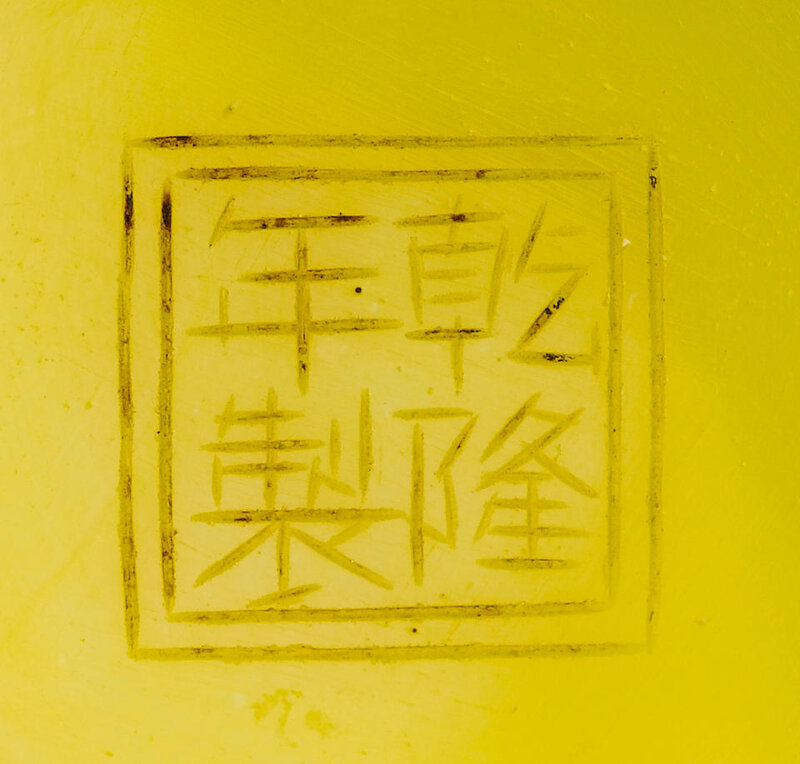
Lot 203. A rare yellow glass zhadou, Qianlong four-character wheel-cut mark and of the period; 8cm high. Estimate: HK$50,000 - 80,000, USD 6,400 - 10,000. Sold for HK$504,000 (€ 57,529). photo Bonhams
The heavily constructed body of compressed spherical form supported on a straight foot and flaring out to a broad mouth, the base wheel cut with a four-character mark within a double square.
Provenance: Ashkenazie & Co., San Francisco, 1 May 1987.
Illustrated 出版: A Chorus of Colors, Asian Art Museum of San Francisco, 1995, p.89, no.61
清乾隆 黃玻璃渣斗「乾隆年製」楷款
來源:於1987年5月1日購自三藩市Ashkenazie & Co.
For a Yongzheng reign-marked fluted yellow glass zhadou in the Beijing Palace Museum, see Luster of Autumn Water. Glass of the Qing Imperial Workshop, Beijing, 2005, p. 132, pl. 11.

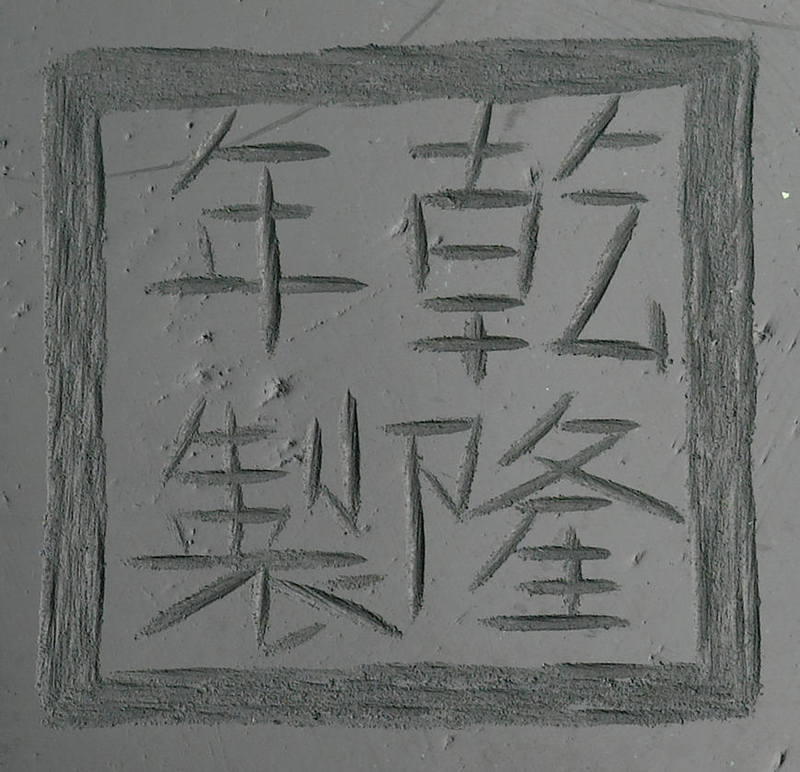
Lot 202. A rare green glass bottle vase, Qianlong four-character wheel-cut mark and of the period; 21.5cm high. Sold for HK$480,000 (€ 54,790). photo Bonhams
Of compressed spherical form supported on a slightly splayed foot, surmounted by a tall cylindrical neck flared slightly at the mouth, the colour of a rich emerald-green, suffused with bubbles.
Provenance: A & J Speelman Ltd., London, 4 February 1993.
Illustrated 出版: A Chorus of Colors, Asian Art Museum of San Francisco, 1995, pp.72-73, no.43
清乾隆 透明綠玻璃扁瓶 「乾隆年製」楷款
來源:於1993年2月4日購自倫敦A & J Speelman Ltd.


Lot 207. A yellow glass 'lotus leaf' water dropper. Qing dynasty, 18th century; 11cm diam. Sold for HK$480,000 (€ 54,790).. photo Bonhams
Of deep rounded form, boldly shaped and carved in relief in the form of a lotus leaf, the exterior carved in relief with luxuriant lotus flowers and stems emanating from the base and extending to the lotus flowers, all carved in relief, the irregular shaped rim folded over to simulate the edges of a lotus leaf, lowered and widened at one side to form a spout, the opposite side carved with a lotus seed pod and two frogs, the lip carved with two small crabs depicted clambering over, the exterior and interior of the vessel decorated with gently incised lines conveying the veins of a lotus leaf.
Provenance: Spink & Son Ltd, London, 14 April 1989.
Illustrated 出版: Minor Arts of China vol.IV, Spink & Son Ltd., 1989, p.86, fig.111, and illustrated on the front cover
Octagon vol.XXVI, Spink & Son Ltd., 1989, p.14, fig.1
C.Brown & D.Rabiner, Clear As Crystal, Red As Flame: Later Chinese Glass, China House Gallery, China Institute in America, New York, 1990, cat. no.42
A Chorus of Colors, Asian Art Museum of San Francisco, 1995, p.109, no.84
Triptych: 76, Nov-Dec 1995, Asian Art Museum of San Francisco, pg.19, no.2
R.Kleiner,Chinese Snuff Bottles in the Collection of Mary & George Bloch, British Museum Press, London, 1995, p.xix, fig.1
Catalogue of the International Art Fair, New York, March 1997, p.15, cat. no.18
清 十八世紀黃玻璃荷葉形水盂
來源:於1989年4月14日購自倫敦Spink & Son Ltd

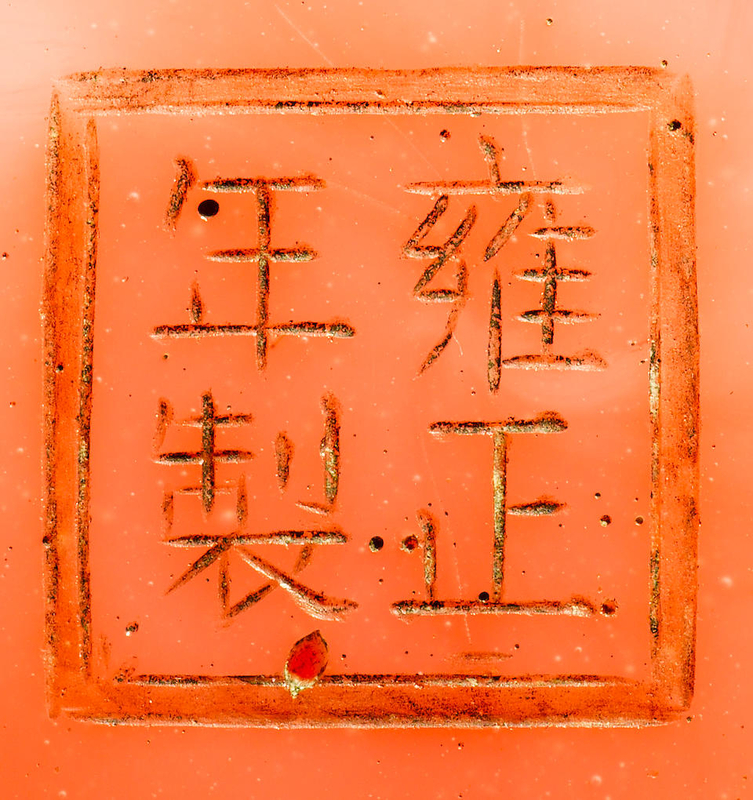
Lot 231. A rare pink glass fluted vase, Yongzheng four-character wheel-cut mark and of the period; 13cm high. Sold for HK$384,000 (€ 43,832). photo Bonhams
Of globular form, supported on a short foot, gently rising at the shoulder and flaring at the neck, skillfully moulded into ten vertical flutes extending from the foot to the rim, the colour of a rich pink mottled with pale white splashes, suffused with bubbles and inclusions.
Provenance: Ashkenazie & Co., San Francisco, 29 September 1988.
Illustrated 出版: A Chorus of Colors, Asian Art Museum of San Francisco, 1995, pp.52-53, no.25
Glass for K'ang Hsi's Court, Arts of Asia, Sept-Oct 1991, p.133
清雍正 粉色玻璃十棱盤口瓶「雍正年製」楷款
來源:於1988年9月29日購自三藩市Ashkenazie & Co.
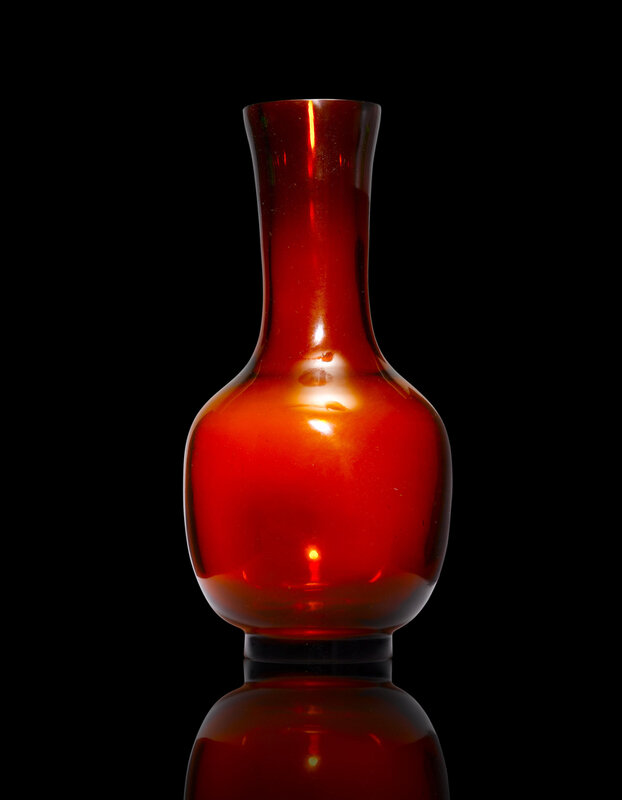
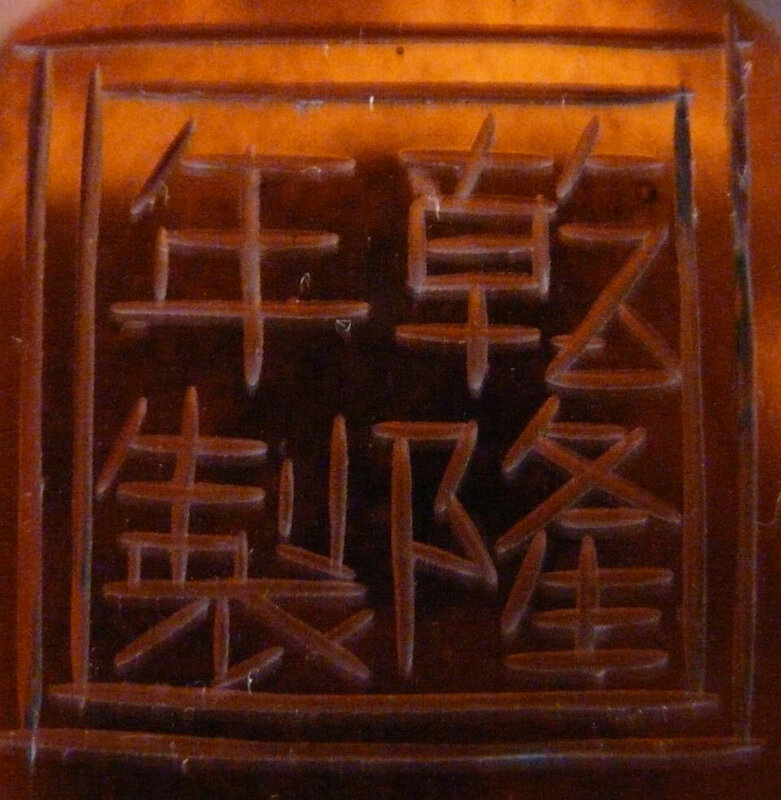
Lot 225. A fine large amber glass vase, Qianlong four-character wheel-cut mark and of the period; 36cm high. Sold for HK$360,000 (€ 41,092). photo Bonhams
Of imposing size, the swollen body supported on a short straight foot, surmounted by a long neck gently flaring at the mouth, the glass of an attractive orange-brown colour.
Provenance: S.Bernstein & Co., San Francisco, 7 October 1992.
Illustrated 出版: A Chorus of Colors, Asian Art Museum of San Francisco, 1995, pp.68-69, no.40
清乾隆 瑪瑙色透明玻璃天球瓶 「乾隆年製」楷款
來源:於1992年10月7日購自三藩市S.Bernstein & Co.
Lot 224. A large white glass bottle vase, Qing dynasty; 27.6cm high. Sold for HK$336,000 (€ 38,633). photo Bonhams
Of globular form supported on a short straight foot, surmounted by a tall cylindrical neck, incised and inlaid with gold at the rim with an apocryphal Qianlong seal mark, the white glass of exceptional translucence reminiscent of flawless white jade.
Provenance: Ashkenazie & Co., San Francisco, 7 January 1991.
Illustrated: A Chorus of Colors, Asian Art Museum of San Francisco, 1995, pp.84-85, no.55
Note: A blue glass vase of similar form, also incised and inlaid in gold with an apocryphal Qianlong seal mark, is illustrated in Elegance and Radiance. Grandeur in Qing Glass. The Andrew K.F. Lee Collection, The Art Museum, The Chinese University of Hong Kong, Hong Kong, 2000, pl.13.
Lot 235. A pair of ruby-red c arved glass 'lotus' cups, Qianlong four-character wheel-cut marks and of the period; 6.2cm high. Sold for HK$312,000 (€ 35,873). photo Bonhams.
Each of deep rounded form, the rich ruby-red glass skilfully carved of undulating petal form, the exterior carved in low relief with a duck amidst luxuriant lotus plants, supported on a root coiling around the foot encircling the mark.
Note: Qianlong glass vessels inscribed with the reign mark on the base are rare, and these marks appear to have been reserved for the highest quality pieces. For an overlay vase with a Qianlong four-character kaishu mark similarly inscribed around the base, see a red-overlay glass vase from the Qing court collection, preserved in the Palace Museum, Beijing, illustrated in Luster of Autumn Water. Glass of the Qing Imperial Workshop, Beijing, 2005, p. 202, pl. 55.
Lot 233. A ruby-red cylindrical glass brush holder, Mid Qing dynasty; 17.8cm high. Sold for HK$204,000 (€ 23,455). photo Bonhams.
Of cylindrical form, the rich ruby-red glass carved in relief with a landscape scene of a groom watching a horse rolling on the ground, framed under gnarled pine branches and leaves, the reverse inscribed in xing cao with a seven-column poem, all reminiscent of a bamboo brushpot by the famous bamboo carver Wu Zhifan.
Provenance: Robyn Turner Gallery, San Francisco, 24 April 1998.
Illustrated 出版: E.B.Curtis, Chinese Glassmaking, Arts of Asia, Nov-Dec 1998, pp.98-107, no.13 & 14
清中期 紅玻璃雕渡銀河筆筒
來源:於1998年4月24日購自三藩市Robyn Turner Gallery
Lot 228. A monumental 'clair-de-lune' glass bottle vase, Qing dynasty; 44cm high. Sold for HK$180,000 (€ 20,696). photo Bonhams
The exceptionally large vase of compressed globular form supported on a short, slightly splayed foot, surmounted by a tall cylindrical neck, the glass of an attractive opaque pale blue colour.
Provenance: S.Bernstein & Co., San Francisco, 30 March 1993.
Illustrated 出版: A Chorus of Colors, Asian Art Museum of San Francisco, 1995, pp.82-83, no.51
E.B.Curtis, Journal of Glass Studies vol.41, Corning Museum of Glass, 1999, p.152, fig.3
清天藍玻璃長頸瓶
來源:於1993年3月30日購自三藩市S.Bernstein & Co.
Lot 219. A pair of gilt decorated glass 'dragon' bowls, Guangxu period; 16.3cm diam. Sold for HK$168,000 (€ 19,316). photo Bonhams
Each of deep rounded form supported on a short foot, intricately decorated in gilt with nine dragons, the interior with two pairs of dragons depicted in pursuit of a flaming pearl around a central writhing dragon, the exterior with an additional two pairs of dragon rendered in a similar design, all against a dense floral ground, all below a collar of ruyi motifs at the rim and above a narrow band of classic scroll at the foot, the base with apocryphal Qianlong mark.
Provenance: Ashkenazie & Co., San Francisco, 21 November 1988.
清光緒白玻璃畫金彩龍紋碗一對
來源:於1988年11月21日購自三藩市Ashkenazie & Co.
A pair of white glass Moghul-style bowls.18th century. photo Bonhams
Each of shallow rounded form supported on a short straight foot, the exterior intricately carved with registers of overlapping chrysanthemum petals emerging from the base in concentric patterns and rising to the foliate rim. 7 cm high. Sold for HK$156,000
Provenance: Ashkenazie & Co., San Francisco, 29 September 1988.
Illustrated 出版: R.Kleiner, Chinese Snuff Bottles in the Collection of Mary & George Bloch, British Museum Press, London, 1995, p.xxiii, fig.6-7
十八世紀 白玻璃蓮花形碗一對
來源:於1988年9月29日購自三藩市Ashkenazie & Co.
A turquoise-green glass vase;Qianlong four-character wheel-cut mark and of the period. photo Bonhams
The heavily constructed body of slender curved form, tapering elegantly from the narrow foot to the swollen central body, rising to a long flared neck, the colour of a rich blue-green suffused with black inclusions and striations in imitation of turquoise, the countersunk base wheel cut with a four-character mark within a double square.18.1cm high. Estimate: HK$40,000 - 60,000, USD 5,200 - 7,700. Sold for HK$144,000
Provenance: Ashkenazie & Co., San Francisco, 30 October 1986.
Illustrated 出版: A Chorus of Colors, Asian Art Museum of San Francisco, 1995, pp.80-81, cat. no.50
清乾隆 仿綠松石色玻璃橄欖瓶「乾隆年製」楷款
來源:於1986年10月30日購自三藩市Ashkenazie & Co.
A vase of identical size and shape from the Qing court collection, preserved in the Palace Museum, Beijing, but in a brilliant 'sky-blue', is illustrated in Luster of Autumn Water: Glass of the Qing Imperial Workshop, Beijing, 2005, p. 154, pl. 24. See also a turquoise glass vase illustrated in Elegance and Radiance: Grandeur in Qing Glass. The Andrew K.F. Lee Collection, The Art Museum, The Chinese University of Hong Kong, Hong Kong, 2000, pl.48.
Dr Alan Feen, a radiation oncologist from Tulsa, Oklahoma, began collecting Chinese glass in 1986 when he purchased his first object, the small Qianlong ruby-red and overlay white brush washer (Lot 208) in San Francisco. Dr Feen had been looking at and studying Chinese glass since a 1983 trip to China, a land he had always wanted to visit. He has now made the decision to let go of the collection for others to enjoy. A second sale of the glass will be held in San Francisco in 2011.
The Alan E. Feen Collection of Chinese Glass
Emily Byrne Curtis
His interest in Chinese glass commenced in 1983. Coincidently this same year also marked the publication of Yang Boda's seminal study of glass wares from the Qing Dynasty (1644-1911). Working with records of the Workshops of the Imperial Palace (Zaobanchu), Yang was able to chart the course of Imperial glassmaking from the Yongzheng reign (1723-35) to the end of the Xuantong (1909-11) period. However, since records for the Kangxi era (1662-1722) were lacking, little was known about the Imperial glass workshop the emperor had established in 1696.
Fortunately, historical documents in the archives in Rome and the Vatican contained more specific information regarding the founding of the glassworks. They revealed that the workshop itself, was located within the confines of the Imperial City on a piece of land adjacent to the French Jesuits' church. This proved to be in accordance with two eighteenth century Chinese texts which state that the entire complex was located on the east side of a street named Canchikou. From other documents conserved in the Japonica/Sinica division of the Archivum Romanum Societatis Iesu, we learn from several letters dating to 1696 and written by Jean de Fontaney, SJ (洪若翰 Hong Ruohan), that this glassworks had been erected by Kilian Stumpf, SJ (紀理安 Ji Lian), that it was already producing glass wares. According to the accounts written by Matteo Ripa (馬 國 賢 Ma Guoxian) and housed in the archives of Archivio Storico de Propaganda Fide, in 1711 the glass workshop was still under Stumpf's direction, and in May 1715 Ripa recorded how Stumpf had built many furnaces for glass making, while attending to the needs of a great number of craftsmen, all of which required his constant attention.
Continuing on, Theodorico Pedrini, CM (德理格De Lige) sent a request to Rome for examples of glass with gold sparkles that shine. Pedrini also added that the glassworks was experiencing difficulties in making this variety. His description brings to mind the copper particles found in aventurine glass. The glass batch for aventurine was in fact, hard to make and nearly impossible to work by blowing. Nonetheless, in 1705 Kangxi presented the military governor of Jiangsu with seventeen pieces of glass among which were two blue vases speckled with gold. All of this reminds one of the vase of transparent blue glass in Dr. Feen's collection (Lot 216) which contains spangles (pasta stellaria) imitating aventurine. It may be noted further, that similar examples of this type of glass may be found in the collection of the Beijing Palace Museum.
A letter written by Jean-François Foucquet, SJ (傅 聖 澤 Fu Shengze) and preserved in the Biblioteca Apostolica Vaticana describes in detail the gifts Kangxi was sending to the King of Portugal in 1721. Among the glassware we find descriptions for plates the color of celestial red; cups with flower pattern the color of blue sky after rain (yuguo tianqing); pots and plates in the same shade; plates of sky-blue (tianlan); cups and plates of white glass ornamented with flowers; and five cups of white glass and adorned with gilt on the exterior. The latter description may be compared to a pair of gilt decorated bowls (Lot 219) in the Feen Collection which have a four character mark of the Qianlong emperor (r.1736-95) on their bases, representing a style of decor that can be traced back to the earliest days of Imperial glassmaking.
Foucquet's references to glass with flower patterns recalls a mention by Lodovico Antonio Appiani, CM (畢 天 祥 Bi Tianxiang), of having been in a room 'full of young artisans who were carving floral patterns on the glasswares,' while the distinctions made on Foucquet's list between vessels of 'sky-blue' and the 'blue sky after rain' colours impart a distinctive Chinese sensibility. One might suggest that the sky-blue tone is met by the large vase (Lot 228) whose colour has also been referred to as being 'clair de lune.' As to the color of 'blue sky after rain,' this description was probably derived from that of the mysterious Chai stoneware made during the reign of Emperor Shizong ( r. 953-59) in the Five Dynasties period.
Yongzheng (r.1723-35) is said to have exhibited a pronounced preference for vessels made of bright red and purple glass. The method utilized to achieve these colours is believed to have been transmitted to China in the following manner. Kilian Stumpf had attended the Jesuit college in Mainz where the latest modes to produce ruby glass were known. This process included the addition of colloidal gold (gold dispersed as fine particles) to the glass formula. This technology had been transmitted to China has been confirmed by analytical studies of specimens from the Kangxi and Yongzheng periods which showed that the red, pink, and purple enamel colors employed in decorating porcelain had been prepared from ruby glass which contained colloidal particles of gold. In the absence of documented examples for Foucquet's 'celestial red' glass, one can only propose consideration of vessels such as the vase of transparent red glass (Lot 234) might fit this description, and that its color was obtained by making use of this 'new' technology. This reasoning may be applied also to the small bottle vase of transparent amethyst glass (Lot 232), and the fluted vase of opaque pink glass (Lot 231), with incised Yongzheng nian zhi marks in standard script on the slightly recessed bases of both vessels.
The Feen Collection contains some notable examples of glass wares intended for scholarly pursuits such as the brush rest of white glass imitating nephrite, in the form of a crouching boy (Lot 222). Beautifully finished, it was probably intended for the desk of a member of the scholar-literati class, who would have only surrounded themselves with objects of the utmost refinement. Among the other vessels a scholar might have placed on his desk include a brush washer (Lot 205), a brushholder (Lot 204), and a zhadou (Lot 203). The zhadou's wheel engraved Qianlong nian zhi (1736-95) mark within a double square on the base, combined with the yellow color of the three vessels suggest an attribution to the Qing court, especially when one factors in the yellow glass zhadan bearing a Yongzheng mark, which is in the collection of the Beijing Palace Museum. To this group may be added the brush washer (Lot 208) of opaque ivory colored glass with carved overlays of opaque red and an incised Qianlong mark along the lip of the vessel. This brush washer may be compared to a similar vessel in the Hong Kong Museum of Art.
A commonly held view postulates that the overall quality of Imperial glassmaking began to decline in the last quarter of the eighteenth century and that thereafter, nothing of any noteworthy significance was produced. The pair of covered cups in the Feen Collection (Lot 220) challenges this assumption. The transparent amber color glass is of the highest quality, as are the well-engraved Jiajing marks (1796-1819) on both lids and bases.
In some respects the snuff bottle (Lot 221) of transparent blue glass may be seen as complementing the cycle of Imperial glassmaking which started in Kangxi's reign. Carved in facets, the gem-like colour of the bottle suggests the minerals are emerald or aquamarine. Though bearing a Tongzhi mark (1862-74), it evokes the single known marked piece of Kangxi glass in the collection of the Beijing Palace Museum, a waterpot fashioned of faceted, transparent glass intended to evoke the clarity of crystal.
It is perhaps fitting to conclude these thoughts on the Feen Collection by referring to the tribute to Stumpf made by João Mourão, SJ ( 穆 敬 遠 Mu Jingyuan), which said in essence, that the Reverend Father Kilian Stumpf taught the two arts of making glass and enamel colours. Moreover he taught the construction of making ovens and small kilns, a knowledge that the Chinese 'today in their ingenious manner use to fashion very curious objects,' (fazem Hoje obras muito curiozas).
自1986年開始,俄克拉荷馬放射腫瘤學家Dr. Alan Feen便收藏中國玻璃,他的第一件玻璃收藏品便是購自三藩市的白套紅玻璃蓮花瓣紋缽(Lot 208)。1983年中國之旅啟蒙了他對玻璃的興趣,使他愛不釋手。現在他決定把收藏公諸同好,第二部份的玻璃收藏將會在2010年三藩市拍賣。
Emily Byrne Curtis
他自1983年便開始對玻璃感興趣,無獨有偶,這一年也是楊伯達先生出版有關清代(1644-1911)玻璃的研究。透過翻閱造辦處檔案,楊伯達先生追尋出雍正(1723-35)至宣統年間(1909-11)御製玻璃的發展軌跡。可是,由於康熙年間(1662-1722)的記錄有所散缺,只能得知很少有關1696年成立玻璃造辦處的資料。
幸運地,羅馬及梵蒂岡歷史文獻記錄了更多詳細的成立造辦處資料。據資料顯示,造辦處建立在故宮內連接在法國耶穌會教堂的空地之上。這剛好對應了18世紀中文文獻所言,整項建築設立在蚕池口以東。在Archivum Romanum Societatis Iseu 內東方部門的其他文獻裡,我們從數封洪若翰在1696年所寫的信件中得知,紀理安在當時已建立造辦處並製作玻璃器。根據現藏在Archivio Storico de Propaganda Fide馬國賢的記錄,1711年的玻璃造辦處仍是在紀理安的帶領下運作,在1715年5月,馬國賢更記錄了紀理安如何修建多個窯爐作玻璃燒製之用、照顧了眾多工匠的需要,這一切一切也少不了紀理安的長期關注。
其後,德理格向羅馬提出取如金般閃耀的飾片玻璃樣本,他更表示造辦處正試驗製造不同形式的玻璃器。他的描述令人聯想起在灑金星玻璃中的銅微粒。事實上,製作灑金星玻璃是一件不容易的事,幾乎不可以用吹的方式來製造。然而,在1705年康熙皇帝賞賜了江蘇將領十七件玻璃,其中兩件便是帶有閃閃發光飾片的藍玻璃瓶。這些都使人想起Dr. Feen珍藏中其中一件收藏(Lot 216),該器含有閃閃發光的飾片,模仿出灑金星效果,同類例子也可從北京故宮博物院收藏中找到。
現藏Biblioteca Apostolica Vatocana的傅聖潭信件,仔細地形容了康熙皇帝在1721年贈予葡萄牙皇帝的貢品。當中玻璃器包括:天霞紅的碟子、飾花卉紋的雨過天青杯、相同顏色的鍋和碟、天藍碟、飾花卉紋白杯碟以及飾金彩白杯五件。最後一項貢品可與Dr. Feen珍藏中白玻璃畫金彩龍紋碗一對(Lot 219)作比較,這也代表了早期御製玻璃的風格。
傅聖潭信件中提到擁有花卉紋的玻璃器,使人聯想到畢天祥的描述:曾經在「很多年輕工匠們正雕花卉紋玻璃」的房間;而傅聖潭資料中「天藍」和「雨過天青」則表示出特殊的中國品味。一般認為「天藍」色可與天藍玻璃長頸瓶(Lot 228)對照,也就是 "clair de lune"。而「雨過天青」色,很有可能是來自一件屬於五代遼世宗(r. 953-59)時期的柴石器。
雍正皇帝(r. 1723-35)曾說過會展示出他尤其愛好的亮紅和紫色的玻璃瓶。相信是透過以下方法來達到這兩種色彩效果:紀理安曾上德國美因茨耶穌會學校,那裡正是製造最新紅玻璃的地方。過程包括在玻璃配方中加上金(被溶化成粒狀的金屬)。從康熙及雍正時期的瓷器可以證明,此技術是入口到中國的,用於飾瓷器上的紅、粉及紫色琺瑯就是來自擁有金的紅玻璃中提煉出來的。在沒有文件例子去證明傅聖潭的「天霞紅」之下,唯說清雍正透明紅玻璃賞瓶(Lot 234)是配合傅聖潭的描述,而這樣的顏色正是透過利用「新」技術而做的。此原因也可以解釋紫玻璃花瓶(Lot 232)和刻有「雍正年製」楷款的粉色玻璃十棱盤口瓶(Lot 231)的原起。
Dr. Feen珍藏之中也有不少珍貴的文房賞玩,如白玻璃童子形筆擱(Lot 222)。如此精美的瑰寶,顯然是文人雅士之物,因為他們對自身用品常有美學上的追求。除此之外,文人還會在桌上放上筆洗(Lot 205)、筆筒(Lot 204)及渣斗(Lot 203)。渣斗上刻「乾隆年製」雙框款,配合黃色的玻璃,表示出很有可能是皇室御製,當我們看到北京故宮博物院也有藏雍正款黃玻璃時,以上的說法更見明顯。白套紅玻璃蓮花瓣紋缽(Lot 208)也可列入此類文房賞玩,其口緣部份也刻有「乾隆年製」款,同類例子可參考在香港藝術館藏品中找到。
習慣地假定御製玻璃到十八世紀後期進入衰退期,以後更沒有特色的玻璃器生產。Feen珍藏中仿瑪瑙透明玻璃蓋杯一對(Lot 220)挑戰了此想法。此瑪瑙色質量甚高,蓋杯上帶有工整「嘉慶年製」款。
清同治透明藍玻璃鼻煙壺(Lot 211)可說是對自康熙年間開始的御製玻璃系統作了一個保充。此鼻煙壺呈多面體,有如綠寶藍寶般。同是同治年製的玻璃製器,可參見北京故宮博物院藏仿水晶透明玻璃水盂。
或許,我們可以借穆敬遠給予紀理安的感謝辭來總結以上對Feen珍藏的聯想,尊敬的紀理安引進了玻璃製作及琺瑯彩,而且,他教授了如何建造爐及窯,是一種「巧妙地製作新奇物件」的知識。
A pair of large pink glass bottle vases.Qing dynasty, 17th-18th century. photo Bonhams
Each with a sumptuous globular body flattened to comprise four distinct sides, supported on a short splayed foot and surmounted by a tall cylindrical neck, the colour of an opaque pale pink.25cm high. Sold for HK$132,000
Provenance: Ashkenazie & Co., San Francisco, 1 May 1987.
Illustrated 出版: E.B.Curtis, Chinese Glassmaking, Arts of Asia, Nov-Dec 1998, pp.98-107
清 十七/十八世紀 粉色玻璃長頸瓶一對
來源:於1987年5月1日購自三藩市Ashkenazie & Co.
A rare white glass 'recumbent boy' brushrest. Qing dynasty, 17th-18th century. photo Bonhams
Naturalistically moulded as a recumbent boy depicted supporting his head on his hands, with an enhanced curve on his long stylised back comprising a support for a brush, the colour of a brilliant opaque white. 11.9cm long. Sold for HK$66,000
Provenance: Ashkenazie & Co., San Francisco, 30 October 1986.
Illustrated 出版: A Chorus of Colors, Asian Art Museum of San Francisco, 1995, p.44, no.18
C.Brown & D.Rabiner, Clear As Crystal, Red As Flame: Later Chinese Glass, China House Gallery, China Institute in America, New York, 1990, cat. no.5
Glass for K'ang Hsi's Court, Arts of Asia, Sept-Oct 1991, p.132
清 十七/十八世紀 白玻璃童子形筆擱
來源:於1986年10月30日購自三藩市Ashkenazie & Co.
A rare ruby-red and yellow glass 'twin fish' pendant. Qianlong. photo Bonhams
Skilfully moulded and shaped as two fish, one yellow, the other ruby-red, interlinked at opposite end of each other.5.8cm long. Sold for HK$60,000
Provenance: A & J Speelman Ltd., London, 16 June 1987.
清乾隆紅黃玻璃雙金魚擺件
來源:於1987年6月16日購自倫敦A & J Speelman Ltd.
The workmanship on this pendant is reminiscent of that on a Qianlong mark and period glass fish snuff bottle in the Palace Museum, illustrated in Luster of Autumn Water. Glass of the Qing Imperial Workshop, Beijing, 2005, p. 221, pl. 66. See also a red glass tortoise-shaped paperweight, illustrated ibid, pg. 313, pl.137.
A facetted glass 'aquamarine' snuff bottle.Tongzhi four-character wheel-cut four-character mark and of the period. photo Bonhams
Of octagonal facetted form surmounted by a short cylindrical neck, the colour of a brilliant blue-green tone reminiscent of aquamarine, the Mongolian-style stopper inlaid with turquoise and other semi-precious stones.7.1cm high.Sold for HK$57,600
Provenance:Ashkenazie & Co., San Francisco, 5 December 1987.
Illustrated 出版:A Chorus of Colors, Asian Art Museum of San Francisco, 1995, p.122, no.99
清同治 透明藍玻璃鼻煙壺「同治年製」楷款
來源:於1987年12月5日購自三藩市Ashkenazie & Co.
For a closely related Daoguang reign-marked glass snuff bottle, see A Treasury of Chinese Snuff Bottle: The Mary and George Bloch Collection, Volume 5, Hong Kong, 2002, Treasury no. 812, p.314-315.
A pair of amber glass bowls and covers.Qing dynasty.. photo Bonhams
Each of deep rounded form supported on a short pronounced foot, the cover of domed form surmounted by a prominent ring, the base and interior of the cover carved in relief with apocryphal Jiaqing mark, the colour of a rich orange-brown. 8.3cm high. Sold for HK$54,000
Provenance: Ashkenazie & Co., San Francisco, 12 January 1987.
Illustrated 出版: C.Brown & D.Rabiner, Clear as Crystal, Red as Flame, China House Gallery, China Institute in America, New York, 1990, cat. no.62
R.Kleiner, Chinese Snuff Bottles in the Collection of Mary & George Bloch, British Museum Press, London, 1995, p.xxv, fig.9
清仿瑪瑙透明玻璃蓋杯一對 「嘉慶年製」篆款
來源:於1987年1月12日購自三藩市Ashkenazie & Co.
A blue glass 'aventurine-imitation' bottle vase.Qing dynasty, 18th century. photo Bonhams
The globular body supported on a short foot and surmounted by a tall cylindrical neck, of a rich blue colour enhanced with irregular splashes of sparkling metal particles in imitation of aventurine. 19cm high. Sold for HK$50,400
Provenance: A & J Speelman Ltd., London, 12 January 1987.
Illustrated 出版: C.Brown & D.Rabiner, Clear As Crystal, Red As Flame: Later Chinese Glass, China House Gallery, China Institute in America, New York, 1990, cat. no.28
Glass for K'ang Hsi's Court, Arts of Asia, Sept-Oct 1991, p.133
A Chorus of Colors, Asian Art Museum of San Francisco, 1995, pp.64-65, no.36
E.B.Curtis, Notes on Qing Glassmaking, Journal of Glass Studies vol.39, Corning Museum of Glass 1997, no. 2
E.B.Curtis, A Plan of the Emperor's Glassworks, Arts Asiatiques tome 56-2001, p.86, fig.6
E.B.Curtis, Pure Brightness Shines Everywhere: The Glass of China, Ashgate, 2004, p.64, fig.7.4
清 十八世紀仿灑金星藍玻璃長頸瓶
來源:於1987年1月12日購自倫敦A & J Speelman Ltd.
Aventurine glass was made in seventeenth century Venice and later in other European glasshouses. Gold-flecked blue glass is mentioned in the Palace records in Beijing as early as 1705.
A yellow glass brushwasher.Qing dynasty, 18th century. photo Bonhams
Of compressed spherical form rising from a subtly indented foot, the glass of a rich orange-yellow colour. 12.7cm diam.Sold for HK$48,000
Provenance: S.Bernstein & Co., San Francisco, 18 May 1992.
Illustrated出版: A Chorus of Colors, Asian Art Museum of San Francisco, 1995, pp.90-91, no.62
清十八世紀 黃玻璃水洗
來源:於1992年5月18日購自三藩市S.Bernstein & Co.
A blue glass 'chilong' vase.Qing dynasty, 18th century. photo Bonhams
Of elegant pear-shaped form, the sumptuous body rising gently to a tall cylindrical neck, supported on a splayed foot, boldly carved in relief with a pair of chilong dragons depicted clambering around the body, the colour of a rich cobalt-blue. 19.7cm high.Sold for HK$33,600
Provenance: Ashkenazie & Co., San Francisco, 16 June 1986.
Illustrated 出版: A Chorus of Colors, Asian Art Museum of San Francisco, 1995, pp.98-99, cat. no.72
清 十八世紀 透明藍玻璃螭龍紋瓶
來源:於1986年6月16日購自三藩市Ashkenazie & Co.
An 'aquamarine' glass vase. Mid Qing dynasty. photo Bonhams
Of globular form supported on a flared foot and surmounted by a tall tapering neck, the colour of a vivid blue-green reminiscent of aquamarine. 17.9 cm high. Sold for HK$36,000
Provenance: Ashkenazie & Co., San Francisco, 8 December 1987.
Illustrated 出版: A Chorus of Colors, Asian Art Museum of San Francisco, 1995, pp.74-75, no.44
清中期 透明藍玻璃天球瓶
來源: 於1987年12月8日購自三藩市Ashkenazie & Co.
A yellow glass brush holder.Qing Dynasty, 18th century. photo Bonhams
Of cylindral form with well-formed sides rising vertically from the foot, the colour of an attractive orange-yellow colour. 15.7cm high. Sold for HK$28,800
Provenance: S.Bernstein & Co., San Francisco, 15 June 1993.
Illustrated 出版: S.Bernstein, Chinese Art from Distant Centuries vol.2, 1993, no.50
A Chorus of Colors, Asian Art Museum of San Francisco, 1995, pp.90-91, no.63
清 十八世紀黃玻璃筆筒
來源: 於1993年6月15日購自S.Bernstein & Co.
A rare yellow glass facetted bowl.Mid Qing dynasty. photo Bonhams
Of deep rounded form supported on a short foot and flaring out at the rim, the sides shaped into twelve distinct vertical facets, the colour of a rich yellow colour. 11cm diam.Sold for HK$26,400
Provenance: Robyn Turner Gallery, San Francisco, 14 January 1997.
清中期黃玻璃十二棱碗
來源:於1997年1月14日購自三藩市Robyn Turner Gallery
An emerald-green glass bottle vase. Qing dynasty. photo Bonhams
Of sumptuous globular form, surmounted by a tall cylindrical neck and supported on a splayed foot, the colour of a brilliant translucent emerald-green, the base incised with an apocryphal Qianlong four-character mark. 19cm high. Sold for HK$26,400
Provenance: Ashkenazie & Co., San Francisco, 30 October 1986.
清透明綠玻璃天球瓶
來源:於1986年10月30日購自三藩市Ashkenazie & Co.
A rare white glass two-handled cup. Late Ming/early Qing dynasty. photo Bonhams
Of deep tapering form supported on a high foot, moulded at the sides with a pair of handles formed from stylised dragon heads, carved in relief on each side with a shou character between two medallions, the colour of an opaque white. 5.4cm high. Sold for HK$6,600
Provenance: Ashkenazie & Co., San Francisco, 12 May 1988.
Illustrated 出版: A Chorus of Colors, Asian Art Museum of San Francisco, 1995, p.43, no.17
明末/清初 白玻璃壽字紋耳杯
來源:於1988年5月12日購自三藩市Ashkenazie & Co.
Bonhams. Bloch Collection; Wine and Whisky; Chinese Ceramics, Works of Art & Paintings; Jewellery, Jadeite and Wristwatches and Writing Instruments, 23 Nov 2010 to 24 Nov 2010. Hong Kong www.bonhams.com
Dr. Alan E. Feen 珍藏中國玻璃

/https%3A%2F%2Fprofilepics.canalblog.com%2Fprofilepics%2F1%2F0%2F100183.jpg)
/https%3A%2F%2Fstorage.canalblog.com%2F03%2F02%2F119589%2F96711876_o.jpg)
/https%3A%2F%2Fstorage.canalblog.com%2F11%2F31%2F119589%2F94773502_o.jpg)
/https%3A%2F%2Fstorage.canalblog.com%2F20%2F83%2F119589%2F94772815_o.jpg)
/https%3A%2F%2Fstorage.canalblog.com%2F26%2F72%2F119589%2F75604929_o.jpg)
/https%3A%2F%2Fstorage.canalblog.com%2F59%2F60%2F119589%2F26458628_o.jpg)



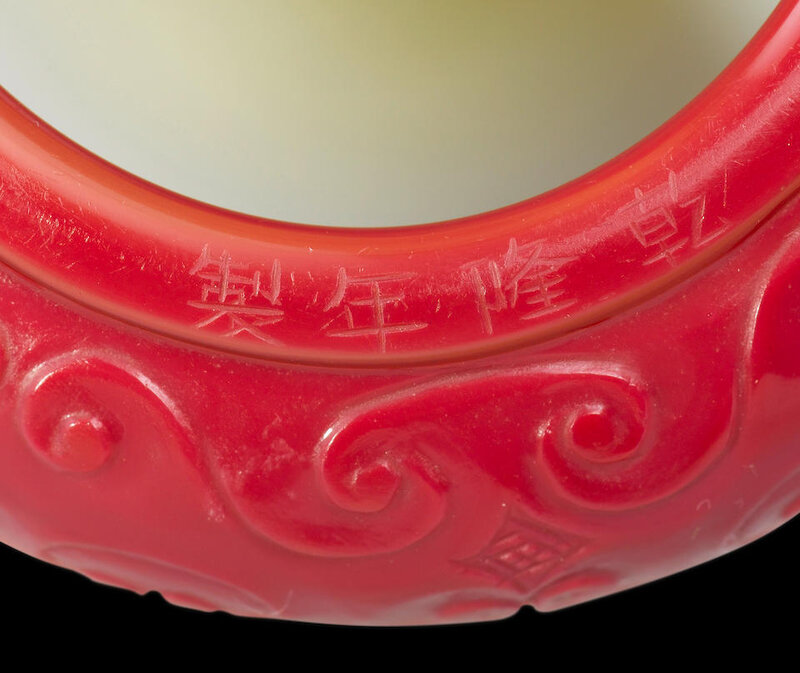
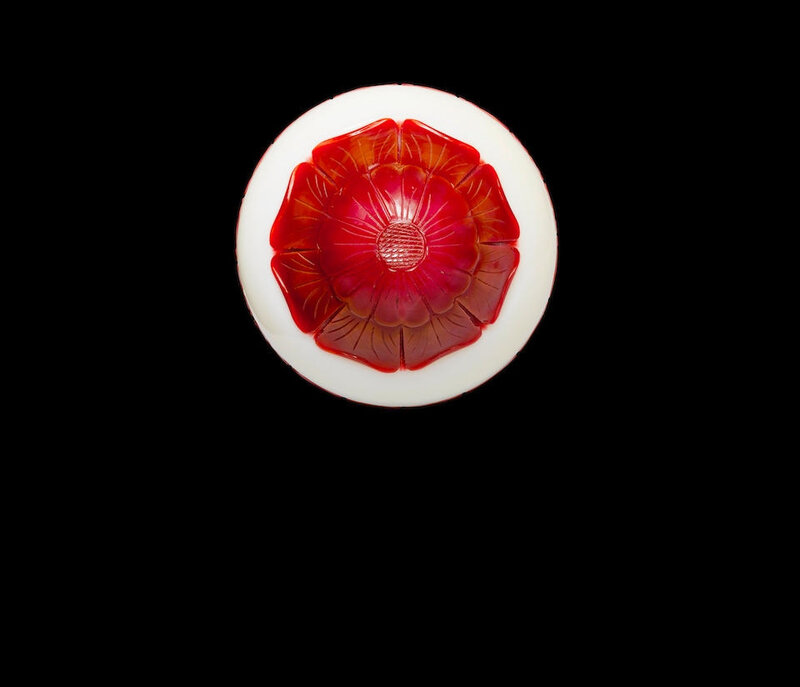


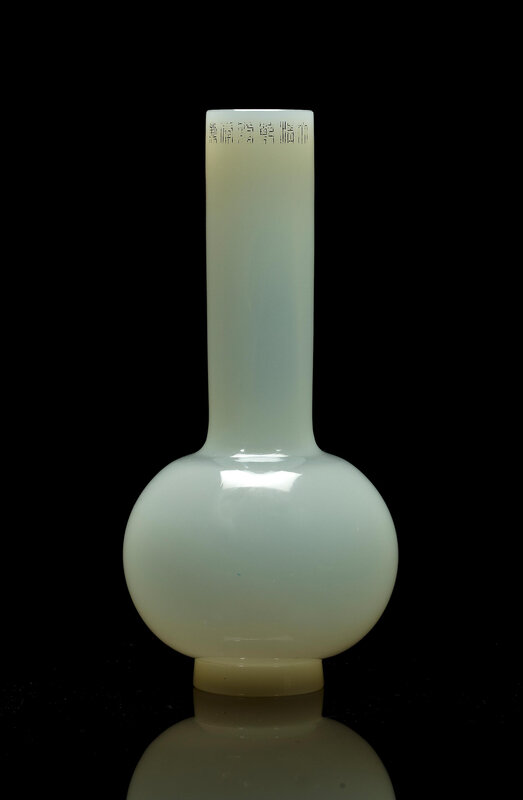

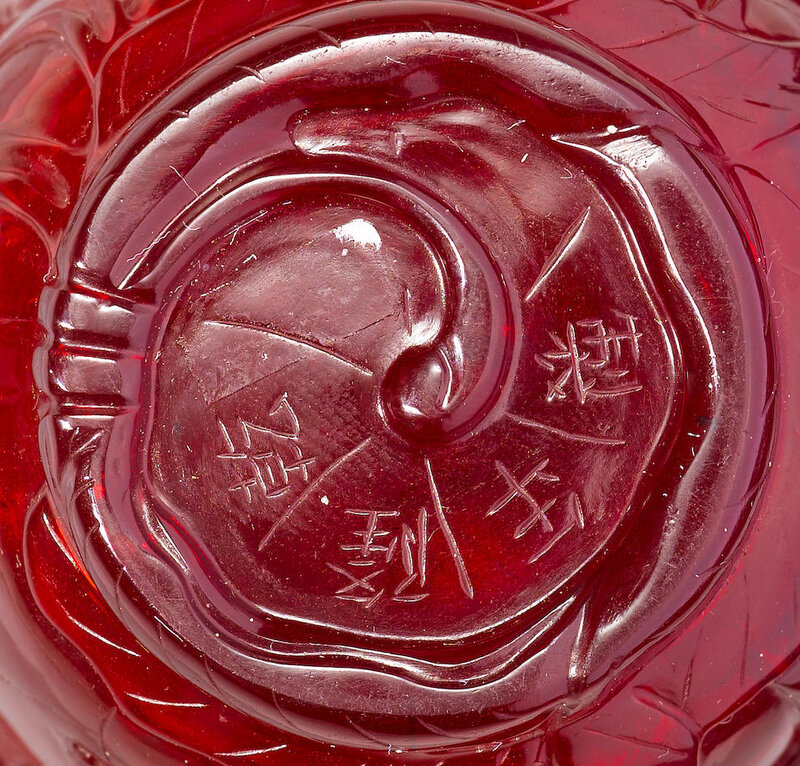


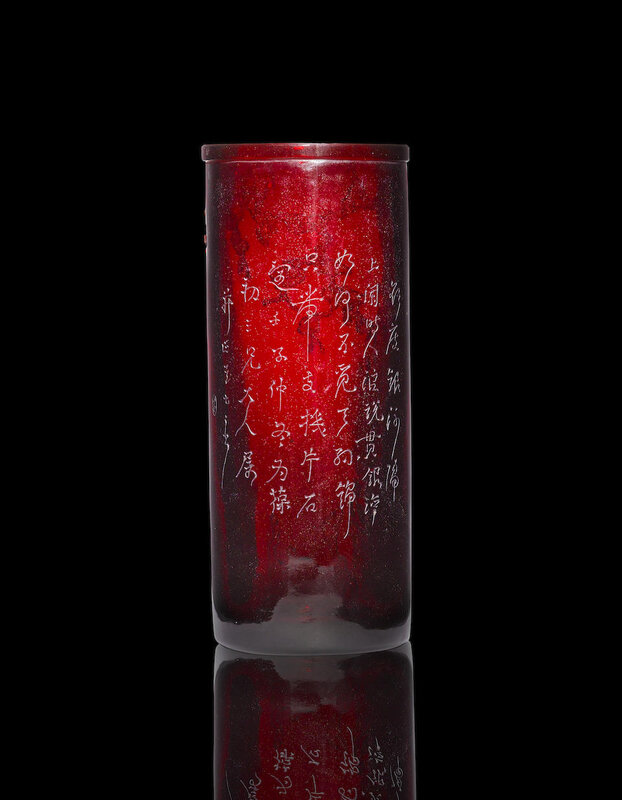




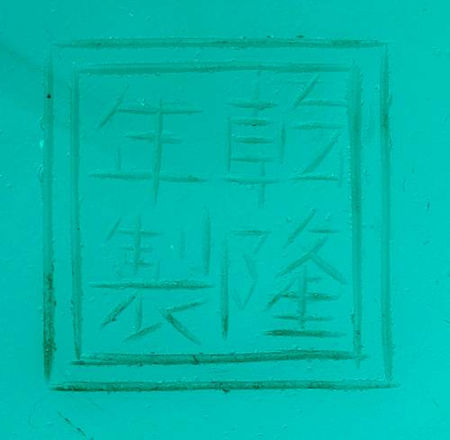
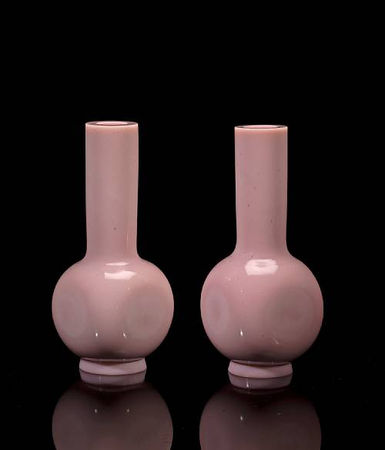
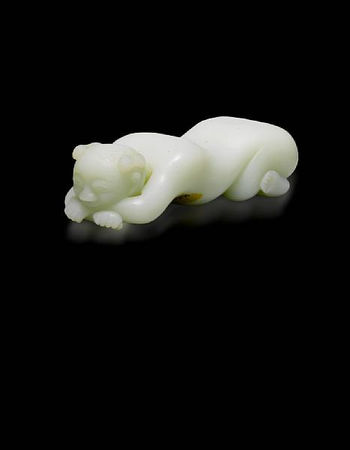
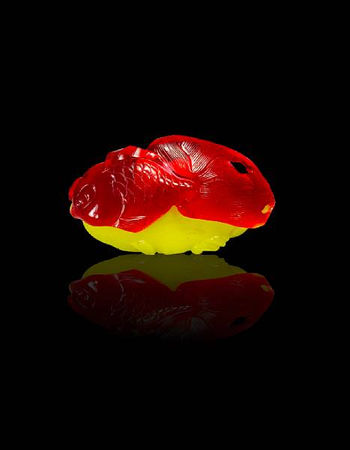
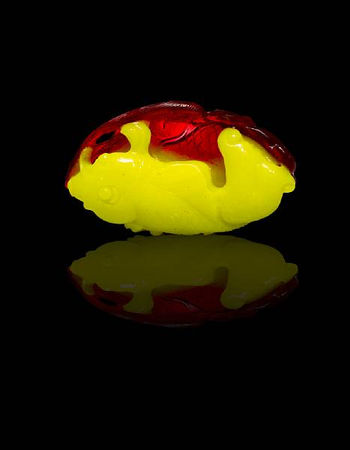




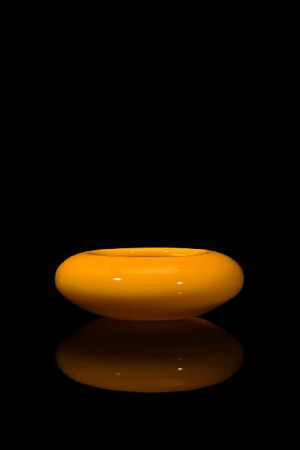
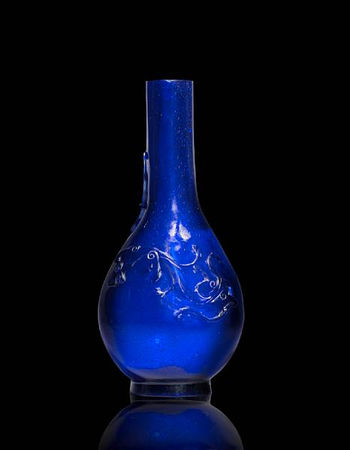

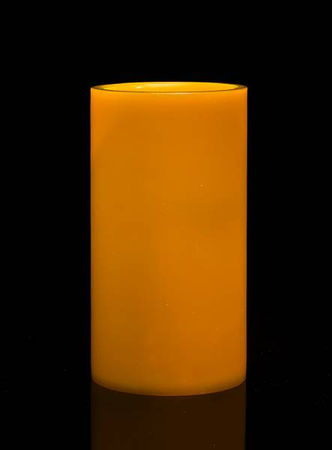
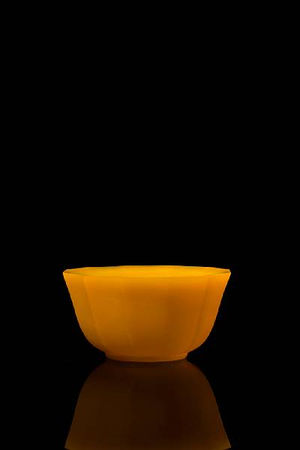




/http%3A%2F%2Fstorage.canalblog.com%2F51%2F84%2F119589%2F122518624_o.jpg)
/http%3A%2F%2Fstorage.canalblog.com%2F42%2F87%2F119589%2F112989160_o.jpg)
/http%3A%2F%2Fstorage.canalblog.com%2F28%2F52%2F119589%2F112495720_o.jpg)
/http%3A%2F%2Fstorage.canalblog.com%2F12%2F27%2F119589%2F96148405_o.jpg)